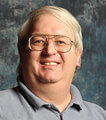In 2012 at Lucas Oil Stadium in Indianapolis, the Troopers’ 18th-place production took a peek at the future from the perspective of the past.
“This Was the Future” was inspired by a steampunk look at impending wonders to be bestowed upon society, if only those denizens of the late 1800s could open their minds to imagine great things. However, as is often the case, what society believes is coming down the road looks more like what we’ve already got than something we can’t imagine in our wildest imaginations.
Steampunk started out as a segment of science fiction inspired by the steam-powered machines of over a century ago. Wonderfully wild creations were imagined in these stories, all powered by steam.

2012 Troopers
In the Troopers’ case, the 2012 production was inspired by the Victorian era of the late 1800s, when steam engines and steam generating plants helped foster the industrial revolution of the Old West and promoted the idea of a technologically advanced civilization, still powered by steam.
“This Was the Future” commenced with what sounded like a scratchy piano solo, re-creating the sound of an early phonograph playing a cylindrical wax recording. Such devices were invented by Thomas Edison in 1877 and played cylinders that were far from durable, being that one of the ingredients in making them was beeswax. A conductor of a long-ago steam locomotive invited all to come on board for a ride into the wonders of the future, where all would witness sights and sounds never before experienced.
That opening segment was extracted from the “Galop” movement of Samuel Barber’s “Souvenirs, Opus 28,” the final of six movements that each focused on a single type of dance. He wrote “Souvenirs” in 1952 as a set of duets for one piano, four hands.

2012 Troopers
Barber was later commissioned to arrange the pieces for chamber orchestra by The Ballet Society, a non-profit institution created to promote ballet training throughout the United States. The ballet version of “Souvenirs” was premiered in 1955 as a tribute to the silent film era, with visual imagery from pre-World War I fashion magazines. Troopers brought the intro to a close with a return of the impressively long and sustained “infinity chord” from the corps’ production the year before.
Next came segments from Aaron Copland’s “The Heiress Suite,” written in 1949 for a Hollywood film. Copland had arrived in Hollywood in 1938 to supplement his income and achieved fame for his scores to “Of Mice and Men” and “Our Town,” each receiving an Academy Award nomination.
After the opening fanfare was finished, the Troopers played “Prologue” from Copland’s “Music for the Theatre,” the first movement of a five-movement suite written in 1925 under commission by Serge Koussevitzky and the League of Composers.
Regarding the work, Copland stated, “I was anxious to write a work that would immediately be recognized as American in character.” Like much of Copland’s output at the time, jazz idioms were worked into the symphonic score, causing scandal in the uptight and staid world of the proper concert halls attendees who still weren’t sure what to do about George Gershwin’s “Rhapsody in Blue” from the year prior. Although the suite was written with no particular theatrical production in mind, Copland stated, “The music seemed to suggest a certain theatrical atmosphere, so after developing the idea into five short movements, I chose the title.”

2012 Troopers
The sound of a steam engine whistle led into another section of “Galop” from “Souvenirs,” performed as the percussion feature, followed by “Interlude,” the third movement from Copland’s “Music for the Theatre.” That segued into “Burlesque,” the fourth movement from the same suite, enhanced by color guard work utilizing curved poles as equipment.
The conductor announced everyone was to get on board for the final part of the excursion into the future of the past.
The closer was a combination of musical quotes from “Galop,” “The Heiress,” and “Music for the Theatre.” Tucked in this package was a nod to the corps’ tradition in the form of a sunburst drill formation executed solely by the color guard flags, immediately followed by the tuba players forming an “11” for the cavalry company that gave the corps its name, resting atop the rest of the brass players who formed the corps’ cross-sabres logo.
For this week only, you can save on the DVD that contains this Troopers performance.
Buy the 2012 DCI World Championship Volume II DVD. (Available 20% off for a limited time only.)

Michael Boo was a member of the Cavaliers from 1975-1977. He has written about the drum corps activity for more than 35 years and serves as a staff writer for various Drum Corps International projects. Boo has written for numerous other publications and has published an honors-winning book on the history of figure skating.
As an accomplished composer, Boo holds a bachelor’s degree in music education and a master’s degree in music theory and composition. He resides in Chesterton, Indiana.


